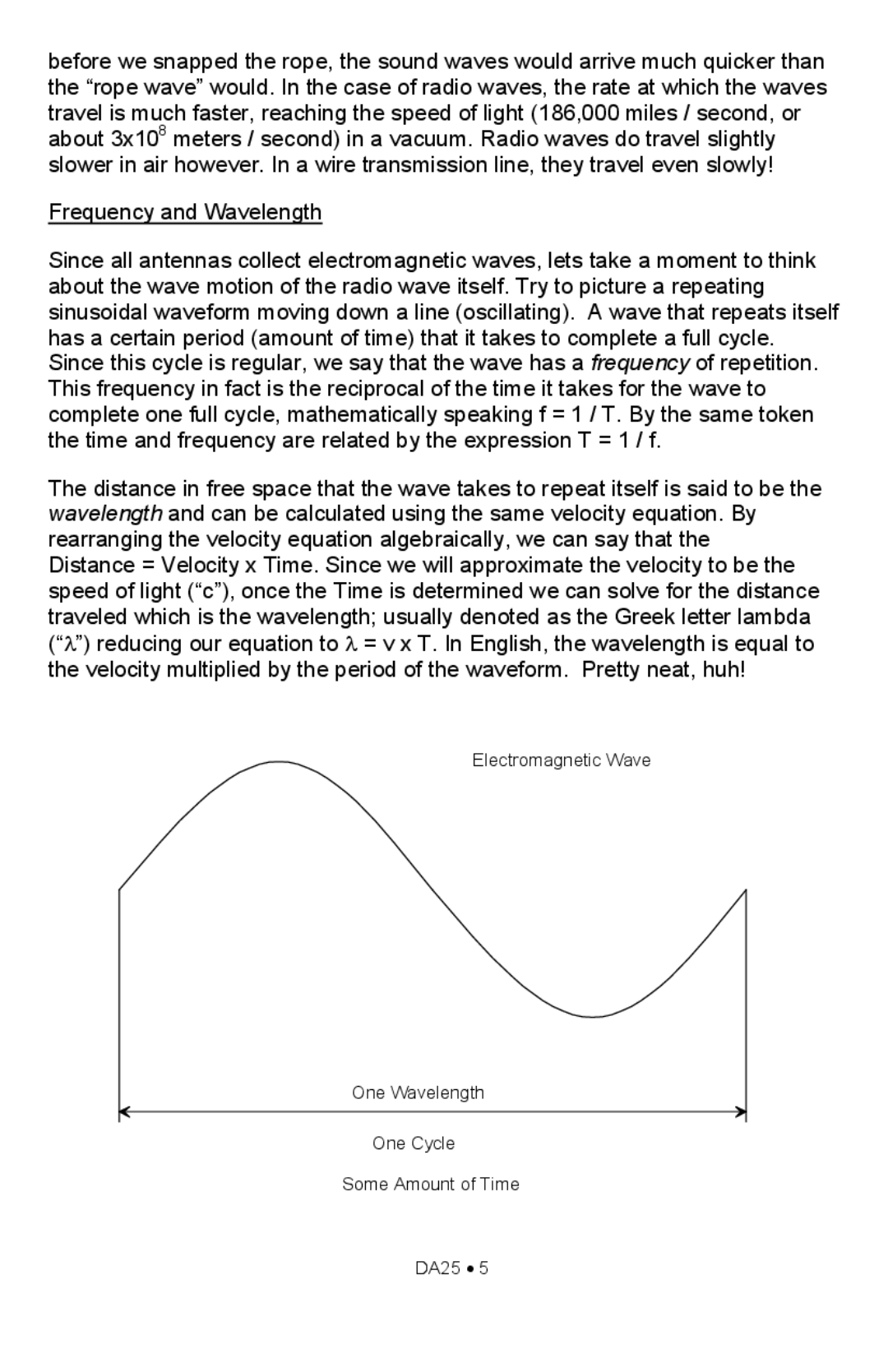
before we snapped the rope, the sound waves would arrive much quicker than the “rope wave” would. In the case of radio waves, the rate at which the waves travel is much faster, reaching the speed of light (186,000 miles / second, or about 3x108 meters / second) in a vacuum. Radio waves do travel slightly slower in air however. In a wire transmission line, they travel even slowly!
Frequency and Wavelength
Since all antennas collect electromagnetic waves, lets take a moment to think about the wave motion of the radio wave itself. Try to picture a repeating sinusoidal waveform moving down a line (oscillating). A wave that repeats itself has a certain period (amount of time) that it takes to complete a full cycle. Since this cycle is regular, we say that the wave has a frequency of repetition. This frequency in fact is the reciprocal of the time it takes for the wave to complete one full cycle, mathematically speaking f = 1 / T. By the same token the time and frequency are related by the expression T = 1 / f.
The distance in free space that the wave takes to repeat itself is said to be the wavelength and can be calculated using the same velocity equation. By rearranging the velocity equation algebraically, we can say that the Distance = Velocity x Time. Since we will approximate the velocity to be the speed of light (“c”), once the Time is determined we can solve for the distance traveled which is the wavelength; usually denoted as the Greek letter lambda (“λ”) reducing our equation to λ = v x T. In English, the wavelength is equal to the velocity multiplied by the period of the waveform. Pretty neat, huh!
Electromagnetic Wave
One Wavelength
One Cycle
Some Amount of Time
DA25 • 5
